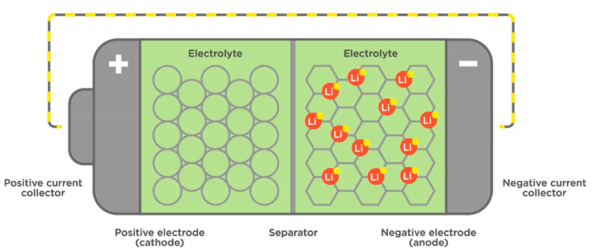| Dry battery
- Dry batteries have also become voltaic batteries. Voltaic batteries are composed of multiple groups of circular plates that appear in pairs and are stacked in a particular order. There are two different metal plates on the circular plate, and there is a layer of cloth between the levels to conduct electricity. Function, the dry battery is made according to this principle. There is a paste-like substance inside the dry mortar, some of which is gelatin. Therefore, its electrolyte is paste-like, and It cannot recharge the disposable battery of this kind of battery after being discharged. The electromotive force of the zinc-manganese dry mortar is 1.5V, and at least multiple dry batteries are required to charge the mobile phone.

- What we often see are the No. 5 and No. 7 batteries. The No. 1 and No. 2 batteries are relatively less used. This battery is mainly used in wireless mice, alarm clocks, electric toys, computers, and radios. Nanfu Battery couldn't be more familiar; it is a famous battery company in Fujian.
Lithium battery
- Inside a lithium battery, there is an electrolyte solution that is not water-based, and the harmful electrode material is lithium metal or lithium alloy. Therefore, the difference between the battery and the dry battery is that the internal reaction material of the battery is different, and the charging characteristics are different. It can recharge the lithium battery. Lithium batteries generally have two types: lithium metal batteries and lithium-ion batteries. These batteries are widely used in mobile phones, electric vehicles, small household appliances, mobile phones, notebooks, electric shavers, etc., and are more widely used than dry batteries.

- Batteries are divided into rechargeable (also called wet batteries) and non-rechargeable (also called dry batteries).
- Among the non-rechargeable batteries, AA batteries are the main ones, called alkaline batteries.
- Lithium-ion batteries are better.
- The endurance is about five times that of alkaline batteries, but the price is five times that. At present, Panasonic and Rimula's lithium-ion No. 5 batteries are the best non-rechargeable batteries.
- Rechargeable batteries are divided into nickel-cadmium, nickel-hydrogen, and lithium-ion rechargeable batteries.
- Among them, lithium-ion rechargeable batteries are the best.
- Nickel-cadmium batteries are usually the size of AA batteries, which are older and eliminated, but they are still sold outside.
- Ni-MH batteries are usually the size of No. 5 and are now the mainstream No. 5 rechargeable batteries, with 2300mAh to 2700mAh as the mainstream. Typically, lithium-ion rechargeable batteries are the size that the manufacturer intended. In terms of rechargeable battery endurance, nickel-metal hydride, nickel-cadmium, and lithium-ion rechargeable batteries are the best.
- Lithium-ion can maintain the power at more than 90% until it reaches almost 5% and then suddenly runs out. The nickel-hydrogen battery is going all the way, indicating that it was 90% at the beginning, then 80%, and then 70%.
- The battery life of this kind of battery cannot satisfy the more power-consuming high-end electronic products, especially when the digital camera needs a flash and it takes a long time to take another picture, and the lithium-ion rechargeable battery does not have this problem. So if the camera is not powered by an AA battery, it will be powered by a lithium-ion rechargeable battery designed by the manufacturer.
- This is the first choice. If it is an AA battery, you can buy a nickel-metal hydride rechargeable battery yourself and buy a better charger. It is best to discharge and charge first, which will extend the storm's life.
Comparison characteristics of lithium batteries and dry batteries:
- Dry batteries are disposable batteries, and lithium batteries are rechargeable batteries, which can be recharged multiple times and have no memory. It does not need to be charged according to the amount of electricity and can be used as needed.
- Dry batteries are very polluted. In the past, many batteries contained heavy metals such as mercury and lead, which caused severe environmental pollution. Because they are disposable batteries, they are quickly thrown away when they are used up, but lithium batteries do not contain harmful metals.
- Lithium batteries also have a fast charging function, and the cycle life is also very high, which is beyond the reach of dry batteries. Many lithium batteries now have protection circuits inside.
Tags: Alakaline Abttery Battery Dry Battery Electrolyte Gelatin Lithium Battery Non-rechargeable Battery Panasonic Rechargeable Battery Rimula


|
 1,267
1,267 
 1436
1436  0
0  0
0  0
0 
